What is Analog Mastering?
Quick Answer:
Analog mastering is the process of making a mix ready for distribution, while solely using analog equipment. Analog equipment offers sonic characteristics that are different than the more modern and common digital mastering process, making it suited for certain genres and styles of music production.
Analog Mastering in Detail:
Since the widespread popularization of digital recording and processing, artists and engineers alike have looked back on the days of analog with a heartfelt nostalgia.
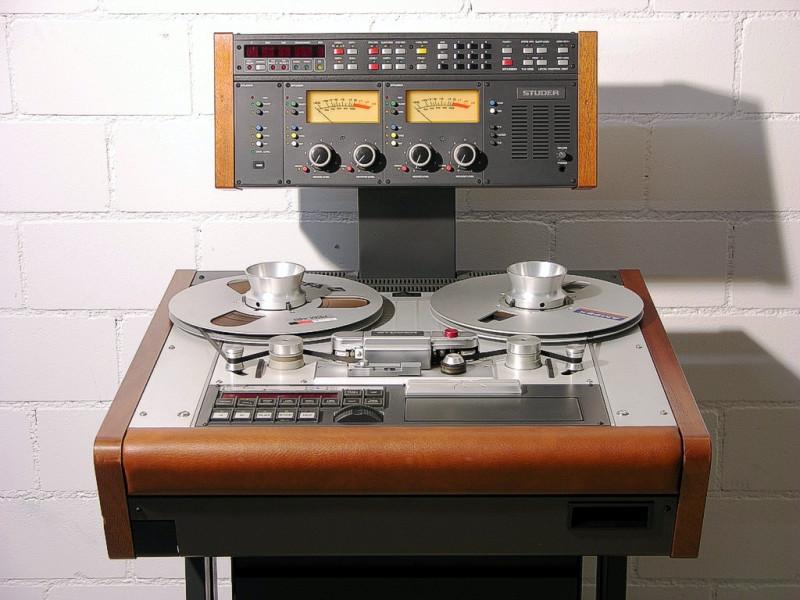
A tape machine could offer multiple forms of harmonic generation, depending on what component was being saturated
Although digital has led to many conveniences, especially with editing and ease of distribution, the sound of analog is often missed in modern masters.
Hence, the endless stream of analog emulation within digital processing. There’s analog emulation for tube, tape, and even for the TG of a vinyl lathe.
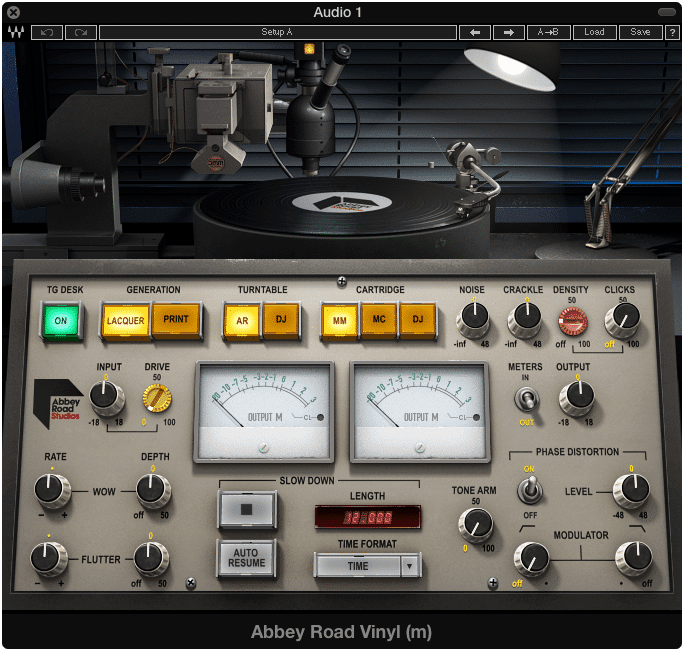
The TG Desk option implements harmonic generation, very similar to that of the TG Desk at Abbey Roads.
Clearly, there must be something about analog that listeners love. Let’s explore what analog is, and how it looks within the mastering domain.
I’ll be comparing analog mastering with digital mastering throughout, for the sake of using the familiar digital domain to highlight the differences between the two, as well as to highlight what makes analog mastering unique.
**Analog vs Digital Mastering Setup Differences** :
The first main difference between digital and analog mastering is the workflow, or the signal chain.
In a digital mastering setup, everything is being processed within the DAW. You have the stereo file or files lined up as they would be in a tracking or mixing session, and then insert channel or channels.
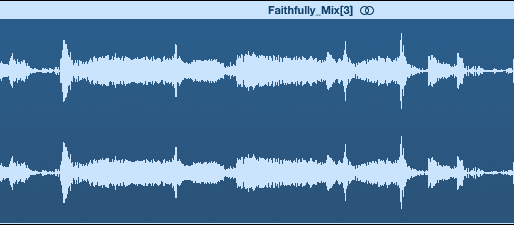
This is a familiar digital representation of a waveform, found in modern DAWs.
On the insert channel you place the desired effects in the order you want to affect the signal. Unless you’re using side chains, the signal processing is top down, meaning the first insert affects the signal first and so on.

A typical signal chain in digital mastering.
As the signal leaves the first insert it is subsequently processed by each following insert. It’s signal is then routed to the output or master fader, from which it can be exported as a digital master.

The output can be thought of as the conclusion of the signal chain.
This allows the mastering engineer to have everything in one place so to speak. He or she has no need to move about a studio, manipulating multiple pieces of gear, as everything is internalized within the digital system.
Here is a List to Simplify and Visualize the Digital Mastering Signal Routing Process:
1. Digital File
2. First digital Insert
3. Each Subsequent digital insert
4. Master Output
5. Exported Mastered File
This contrasts heavily with the analog mastering process.
While performing an analog master, the signal begins at a digital player or DAW, but this is where the similarities end. From there it’s routed to a mastering console, which works as a liaison between the signal and multiple pieces of hardware equipment.

This SPL console is a popular option for many mastering engineers still working in the analog format.
The equipment ranges from equalizers, compressors, limiters, saturators, and imagers, each physically routed in a very specific manner. Unlike digital mastering, you cannot simply drag and drop plugins to new places in the signal chain.
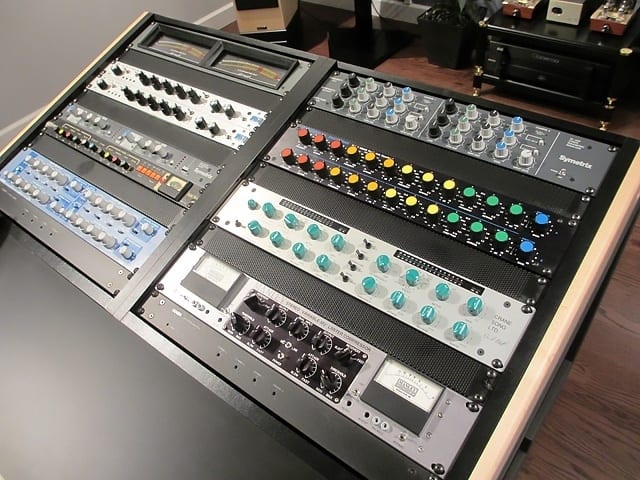
This is the analog mastering desk at Sage Audio
With that said, many mastering consoles allow for side chaining and rerouting of the signal for added flexibility. If a patch bay is implemented, even more flexibility is possible.
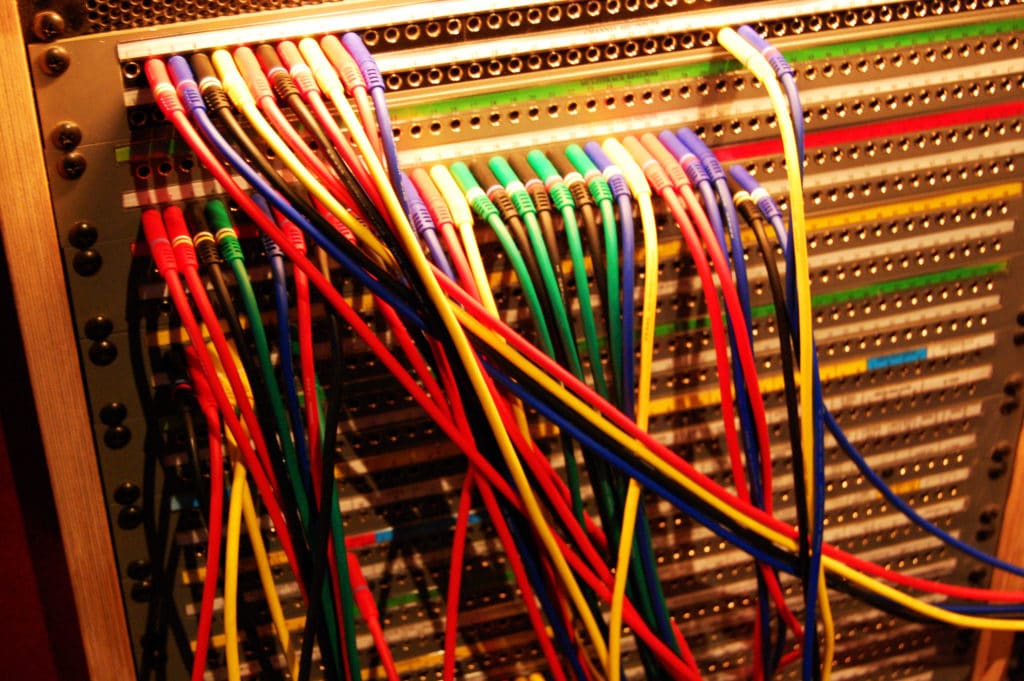
A patch bay used for mastering may not look this complex, but it's still needed for flexibility.
Once the signal has been affected to the specifications of the mastering engineer, it is routed from the mastering console, to either a digital recorder, or back into the DAW as a stereo file.
So to Recap, Here is the Analog Mastering Signal Routing:
1. Digital File from either Digital Player or DAW
2. Mastering console
3. First Piece of Analog Equipment
4. Each subsequent piece of analog Equipment
5. Mastering Console
6. Digital Recorder, or DAW
7. DAW Master Output
8. Exported digital Mastered file
As you can see, the analog mastering process is slightly more complex, even on its most basic and fundamental level.
To a certain extent, it can be argued that analog mastering requires more attention to detail on behalf of the mastering engineer. From accurately documenting settings and routing for future reference, to understanding and memorizing the impedance and electrical details of multiple electronic devices, analog mastering introduces a range of unique and vitally important variables.
Analog Sound:

The Shadow Hills Mastering Compressor is a great example of analog gear used in mastering. It's expansive options offer multiple types of harmonic generation.
A lot can be said about the analog sound. On one hand it’s widely discussed, desired and seemingly understood. On the other it’s so inclusive a term, its actual meaning is shrouded by conjecture.
But to understand what the analog sound is, is to understand it on a fundamental level. Essentially, what we are referring to when discussing analog is the generation of harmonics, and subtle to not-so-subtle soft-knee compression.
(Although a slew of other factors play a role, and the science behind these factors is amazingly complex and multifaceted, some of the more prominent aspects of the analog sound lie in harmonic generation, and soft knee compression.)
When these two things combine, we achieve what is typically referred to as ‘Saturation’ within modern effects processing terminology.

The idea of Saturation has been simplified and slightly misrepresented in modern digital processing terminology
Now, strictly technically speaking, saturation truly only refers to a medium such as tape or tube reaching its limit for additional signal. With that said, once saturation is achieved, both harmonics are generated and a signal begins to become compressed. Because all of these events are so interrelated, they are often conflated, and referenced under the singular term of ‘Saturation.’
Although many of these concepts are deeply interrelated, let’s try to separate these events and look at them in detail for a better understanding.
First Let’s Answer What is Saturation (in the Technical Sense):
As stated above, saturation occurs when no more signal can be transferred due to reaching a medium’s limitation. This can occur in a multitude of ways, at varying degrees, and across multiple mediums.
Tape Saturation occurs when all of the magnetic particles on the tape have had their magnetic poles re-oriented and can no longer be affected for the sake of recording additional signal.
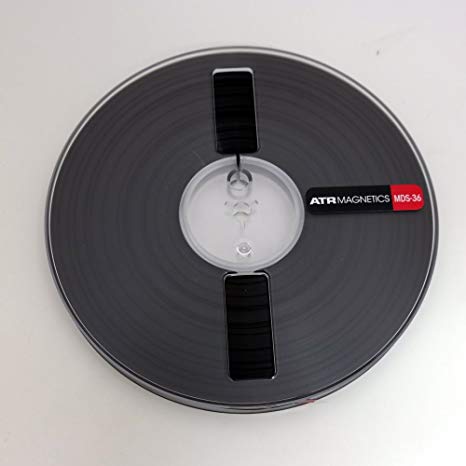
All audio tape is created using magnetic particles, that are reformed when an electrical signal is introduced.
Tube or Valve Saturation occurs when no more electrons can transfer from the cathode to the anode, due to the increasingly positive charge of grid in between them. This looks different amongst triodes, tetrodes, and pentodes, but the concept is very similar.

Transistor and Transformer Saturation occurs when the input current increases to such an extent, that the output current can no longer increase due to voltage drop, thereby blocking any further increase in amplitude.

All 3 of these instances result in the harmonic generation often associated with the analog sound.
Harmonic Generation:
Harmonic generation can take many forms, and is responsible for a multitude sounds. Most of the distortion types we use during tracking, mixing and mastering, are basically a form of harmonic generation on some level.
These distortion types are often categorized by tube, tape, quantization, phase, and a myriad of other classifications - but the primary ones we should concern ourselves with for our purposes here are the tube, tape, and transistor or transformer amplification distortion types.
If you’re curious about some of the other forms of distortion mentioned earlier, I’d highly recommend reading a previous blog of ours titled: “What distortion is actually doing to your mix.” It details the distortion types listed above, as well as provides numerous examples and demonstrations of each type.
Tube Based Harmonic Generation:

A top down view, of hardware used for tube based harmonic generation
This is probably the most sought after sound in the world of analog equipment - not just in analog mastering, but also during audio playback (think tube based home stereo amplifiers) and musical performances (think tube based guitar and bass amplifiers).
What makes tube based harmonic generation so desirable is its pleasing musicality.
Although driving a tube generates both even and odd harmonics, the primary harmonic that’s amplified is the 2nd order harmonic.
This is the frequency directly 1 octave above the fundamental. What accentuating this harmonic does, is create an almost doubling effect, with which the original signal is made more complex.
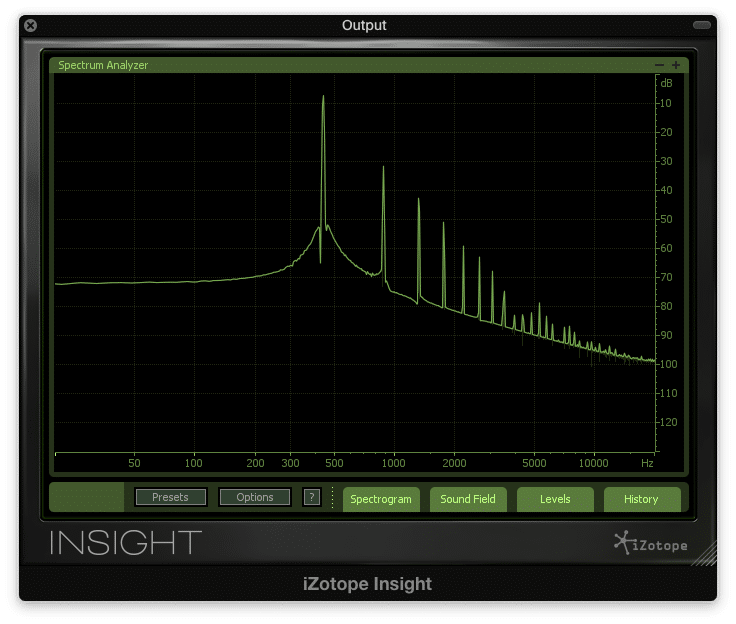
A sine wave, being run through tube emulation
It should be noted that lower order harmonics can be amplified and distorted more, without the distortion being as easily perceived as when applied to higher order harmonics.
This means that the tube can generate, or amplify and distort the 2nd order harmonic to a fair extent, without the sound becoming unpleasant or off-putting.
Tape Based Harmonic Generation:

Although many mastering houses no longer employ the use of tape machines, some still implement them into their signal chain for this purpose.
When tape is magnetized, the very act of transferring electrical signals into a magnetic form introduces harmonic distortions over time. These are typically situated in the lower to mid-range frequencies.
Tape consists of many magnetic particles, which need to be re-oriented to reproduce the sound wave imparted on them. These particles don’t react to all frequencies in the same manner, with many lying dormant due to low energy high frequencies.
The greater number of dormant magnetic particles, the greater amount of past recording that remains on the tape. When a new signal is introduced, small amounts of the past signal still affects the overall reforming of the magnetic particles.
Although this magnetic memory, or hysteresis, is remedied with the implementation of high pitch frequencies that scramble the particles prior to the new signal being recorded, they still play a role in signal shaping and harmonic generation.
On the other hand, if you use all of these magnetic particles, and cannot impart additional signal onto the tape, you’ve reached saturation. When this occurs both even and odd harmonics are generated.

A sine wave being run through tape emulation
Transistor and Transformer Based Harmonic Generation:

This form of harmonic generation is closely related to tape, and many other forms of analog distortion, as the amplifiers used to emit and amplify the signal, typically consist of these electrical components.
Typically when a transistor is saturated it results in odd harmonic generation. When a transformer is saturated it leads to even harmonic generation. It should be noted that these components vary widely based on the material used to create them, so their harmonic generation types can vary greatly.
Just as importantly, it should be known that there is great debate over which harmonic distortion type sounds best. Some claim that even harmonics sound more musical and pleasant overall, while odd harmonics sound richer and add depth.
This may be true for some, but the actual enjoyability of harmonic generation is highly subjective. Furthermore, higher order harmonics are often characterized as harsher and more noticeable in terms of distortion.
Perhaps the primary difference is between lower order and higher order harmonics, as opposed to even and odd harmonics.
Soft Knee Compression:
As each of the afore mentioned mediums reach saturation, the ability to increase the amplitude is drastically decreased. The closer the signal gets to this saturation point, the more the amplitude no longer behaves in a relatively linear fashion.
By making the amplitude non-linear, in a manner that decreases the amplitude relative to the incoming signal, saturation causes the gradual compression of this signal.
It can be imagined like a soft-knee compressor. As the signal reaches the threshold, the knee kicks in and begins to attenuate the signal. This same process occurs in all analog equipment.
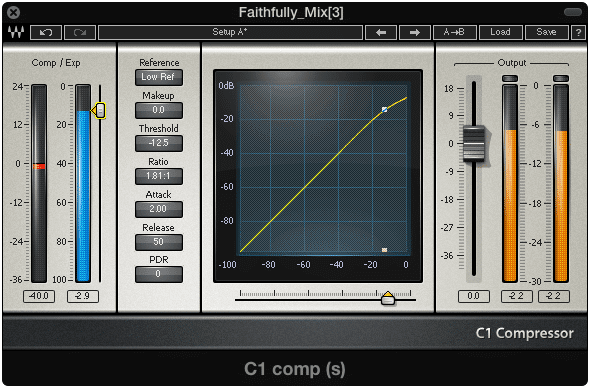
Although we covered a lot of ground here, this explanation of what makes something sound “analog” is by no means comprehensive. To create an all-encompassing description of every technical aspect that could lend itself to recognizable analog characteristics would take a dissertation, if not an entire book.
But hopefully this description of certain important aspects of analog mastering, has demonstrated the stark differences between the digital and analog domains.
The Best Genres for Analog Mastering:
So, enough of the technical.
Let’s discuss which genres typically work best in an analog mastering setup, and which work better in a digital.
To answer that question, we should consider how each shapes the sound of their signal, and how this shaping relates to certain music types.
Analog:
As we’ve discussed, analog gear can cause harmonic distortion. This means that the low to mid-level frequencies are more complex and dense. This results in what is often characterized as a warmer sound.
The soft-knee compression controls dynamics, while attenuating transients. Because transients are typically higher in pitch, like with a snare or vocal sibilance, these higher pitch frequencies are attenuated.
This accentuates the lower frequencies even more.
Overall the sound will be fuller, and slightly less detailed. The end result will be less transparent, as the sound will be affected in a multitude of ways depending on the complexity of the analog setup.
This makes it great for rock, indie, acoustic, and countless other genres, looking for a fuller, warmer and slightly less transient sound.

The Strokes helped to repopularize rock music, as well as the analog sound associated with it.
Digital:
Because digital processing doesn’t significantly color the sound (unless it’s emulating analog processing) it’s great for genres that require transparency and retention of transients.
This makes it suitable for metal, rap, and EDM.
In Metal , many aspects are distorted during the actual performance, so clarity is important during post production.
For Rap , the genre it characterized by its crispness, so sacrificing transient response may not be the first choice for some artists and engineers - although the 808 could definitely benefit from some lower harmonic generation via analog processing.
And in EDM , the genre has closely associated it’s sound with digital processing. The sound is typically engineered to be as transparent, and transient as possible.

Although EDM stems for analog based dance music, it has morphed into a strictly digital sound.
Now of course there are exceptions, and these statements should be taken with a grain of salt.
A genre shouldn’t be limited to one specific form of processing, so to suggest that would be to limit the creative possibilities for all of those making music in that genre.
Conclusion:
Although we talked a lot about saturation and how it relates to distortion and compression, we should keep in mind that mastering is a very subtle and controlled process.
With that said, many engineers know that a little goes a long way, especially when processing the entirety of a mix.
Too much distortion or compression can have negative effects on the overall sonic quality of a master, and should be treated with care for the artist’s and mixing engineer’s original vision.
That is why although these effects can be used during an analog mastering session, they are always done so sparingly, and in a way that accentuates the most positive aspects of a song and it’s performances.
If you’re curious what your mix would sound like mastered with all analog equipment, Sage Audio specializes in analog mastering.
You can get a free sample of your mix, mastered using analog gear here: www.SageAudio.com/register.php
How would your song sound with analog mastering?




